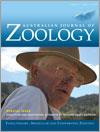The ‘buchanosteid’ placoderms are best known from the Early Devonian of Australia, but also occur in China, Russia, Central Asia and the Middle East. Here we rediagnose the type species Buchanosteus confertituberculatus (Hills 1936) from the type locality at Buchan, Victoria, in the light of new material of both head and trunk shields. The superfamily Buchanosteoidea Denison, 1978 is redefined to unite taxa that share a similar skull roof with separate rostro-pineal (ethmoid) bone, and postethmoid skull pattern characterised by a large trapezoidal nuchal, strap-like short and broad preorbitals, large subrectangular centrals, small postorbitals not contacting the paranuchals, and large, elongate marginal plates. The Family Buchanosteidae is redefined on skull roof and parasphenoid shape and trunk armour features as a monotypic family within the Buchanosteoidea. A new family (Parabuchanosteidae nov.) includes taxa with the posterior lateral plate overlapping the anterior dorsolateral plate externally. Two new buchanosteids are described, Richardosteus barwickorum gen. et sp. nov., from Burrinjuck, south-eastern Australia, and Urvaspis lithuanica gen. et sp. nov., from Severnaya Zemlya, Russia.
How to translate text using browser tools
26 May 2014
Taxonomic revision of buchanosteoid placoderms (Arthrodira) from the Early Devonian of south-eastern Australia and Arctic Russia
J. A. Long,
E. Mark-Kurik,
G. C. Young
ACCESS THE FULL ARTICLE

Australian Journal of Zoology
Vol. 62 • No. 1
May 2014
Vol. 62 • No. 1
May 2014




